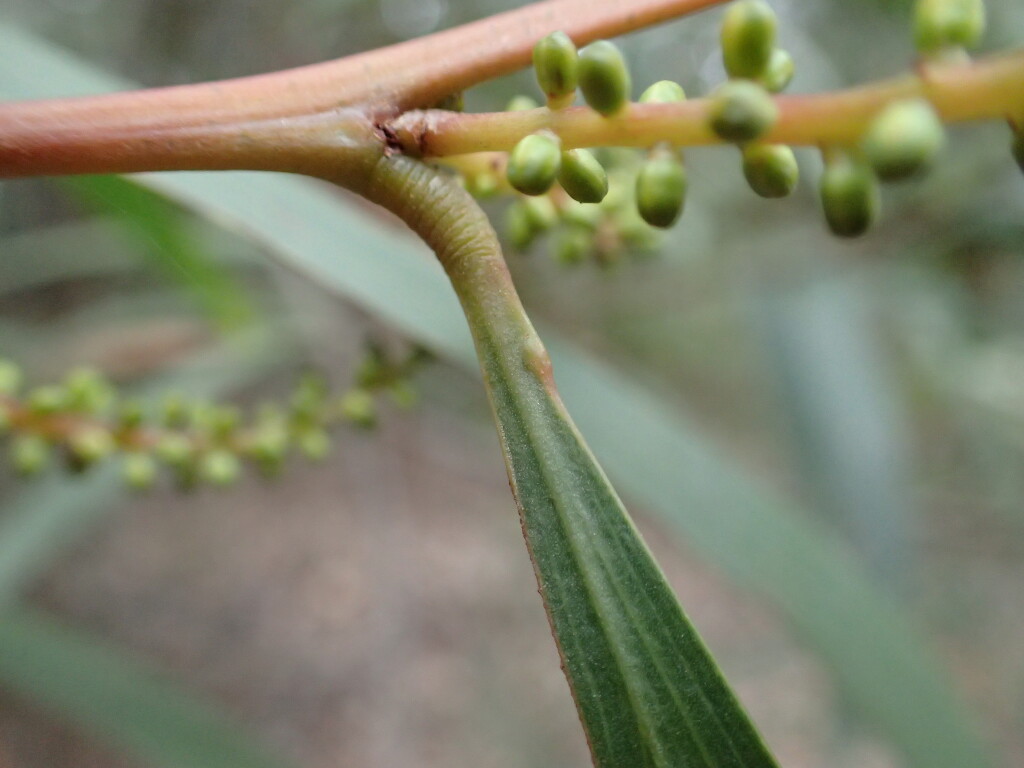Acacia obtusifolia
A.Cunn.Erect or spreading shrub or tree, 3–15 m high. Phyllodes linear to narrowly elliptic, 12–25 cm long, 7–23 mm wide, obtuse, coriaceous, margins uneven and edged with microscopic granular resin globules, dark green; primary veins commonly 2–5, prominent, secondary veins more or less parallel and reticulate; gland c. 8 mm above. Spikes 3–7 cm long, creamy to pale yellow; rachis visible between flowers, glabrous; peduncles 5–10 mm long. Flowers 4-merous, loosely packed; sepals united, often ciliate. Pods subcylindric, linear, mostly straight, 5–15 cm long, 3.5–7 mm wide; seeds narrowly elliptic, 4.5–6 mm long, wide, shiny, funicle thin, folded c. 4–5 times, aril turbinate. Flowers usually Dec.–Feb.
EGL, EGU, HSF, MonT, HFE. Also Qld, NSW.
Largely restricted to dryish sites in foothills and mountain ranges in far eastern Victoria where typically a sprawling shrub to c. 2 m high, but also a component of moist forests of the Howe Range (east of Mallacoota) where it develops into a taller erect shrub or small tree. A small population established recently near McMahons Creek in the Upper Yarra area was possibly derived from seed carried by fire-fighting equipment, and a 1925 collection purportedly from Box Hill is most likely a labelling error or from a cultivated plant.
Distinguished from Acacia longifolia by the resinous margins of its thicker, less pliable phyllodes. Forms from dry, rocky sites seem to fruit rarely and appear to propagate principally by suckering, but the taller forest form fruits freely.
Entwisle, T.J.; Maslin, B.R.; Cowan, R.S.; Court, A.B. (1996). Mimosaceae. In: Walsh, N.G.; Entwisle, T.J., Flora of Victoria Vol. 3, Dicotyledons Winteraceae to Myrtaceae, pp. 585–658. Inkata Press, Melbourne.
 Spinning
Spinning

